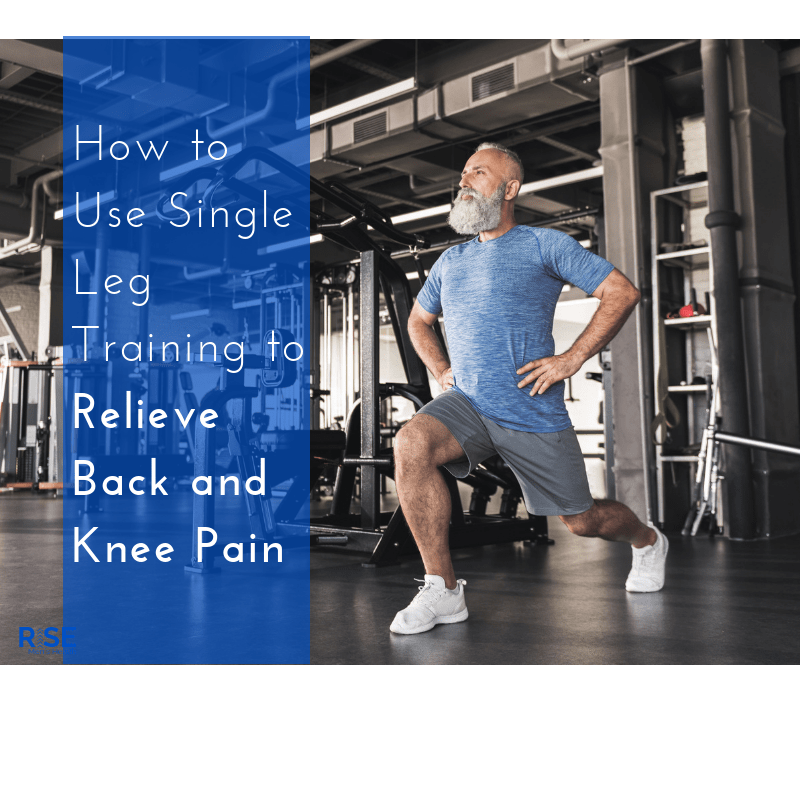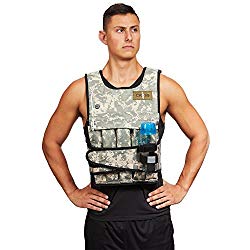
Single Leg Training Exercises to Relieve Back and Knee Pain
Typically, the last exercise anyone chooses to do at the gym involves the legs, but did you know adding single-leg workouts to your regimen can actually help relieve your back, knee, and joint pain?
Let’s review the problems that dual leg exercise can promote, why single-leg movements are actually more efficient, how to get started with these movements, and facts about how our bodies positively respond to leg exercises while using Testosterone Replacement Therapy.
Better yet, doing single-leg exercises is even more important as they engage all primary muscle groups and allow you to focus on proper form starting from your toes to your booty.
With the emergence of CrossFit and the inherent desire to lift heavy things (then, in turn, become an Instagram celebrity), the concept of lifting with exquisite form has gone by the wayside.
Are you truly “feeling the burn” or are you simply tearing apart your spine?
Have you allowed true pain to fall into the category of muscle burn?
Call to Single Leg Action:
It is time to change the way we do leg workouts. After reading Michael Boyle’s “The Case for Single Limb Training” – I’ve stopped barbell squat, deadlift, and reduced double-leg training down to a hand full of light weight movements.
Mr. Boyle asks us to think about this:
“If what we were doing worked so well, why do we have so many ACL tears and so many bad backs? I truly believe that single leg training is the best way to prevent knee injuries and the best way to train around a back problem. Double leg training may create double leg strength, but double leg training doesn’t have the additional preventative value of single leg training.” Source
Test Your Test For FREE!
Get the 15 question Test Your Test Low T History Quiz and get started on a Personalized strategy to RISE Low Testosterone!
Why Do Single-Leg Movements:
Mechanically – The lateral sub-system consisting of the hip, knee, bum, thigh, and lower pain.
When we stand on one leg, lunge, or single-leg squat, we engage the lateral sub-system. When executing a traditional two-leg squat, the lateral sub-system does not fully fire. Mr. Boyle explains that these LSS muscles play a large role in stabilizing our body, which strengthens knees and core.
The key is the number of muscles moving and the lack of pressure applied to the lower back.
For those that do not touch the weight room. In today’s day and age, 35+ year-olds are stuck in the cardio culture where low impact elliptical and treadmills reign supreme because that was taught to them for decades – mainly because jogging became a popular pastime right as they were becoming young adults.
High intensity, resistance exercise is typically left for athletes and no one really cared to understand the healing benefits of the weight room.
Life is crazy busy. Kids start sports and work is hectic (and happy hour has $5 mambo taxi’s at 4 pm).
People opt for the quick sweat cardio burn without considering the pressure being applied to the knee joints. As people age and put off proper exercise, muscle atrophy is another risk one should consider.
For those working long hours sitting at an office or in a car, your legs may not be getting adequate blood flow, which could lead to chronic issues, hemorrhoids, and even clotting. Without a proper leg resistance exercise routine, all of the issues above could pile on to each other leading to more health problems year over year. Source
A drop in energy and constant fatigue is also a sign of Low T — Please book an appointment and consult one of our expert practitioners about how our personalized TRT (Testosterone Replacement Therapy) can help you.
Now I will talk about the fun stuff and HOW to get started and the blood pumping.
How To Do Single Leg Movements:
If you are just starting out or above 35 years old, I recommend skipping the kettlebell or dumbbell and using your body weight until you are comfortable fully supporting yourself in 3 of the 5 exercises.
Single-Leg Balance
Lunge
Plyo-box or weight bench step-ups
Bulgarian Squat aka Single leg squat
Single leg press
Make sure to follow the next four steps when testing out these exercises to understand when you should move to weighted workouts.
Focal Points and Keys to Success To Single Leg Movements:
Posture:
Exaggerate your shoulders and raise your chin to roughly 45 degrees. Rolling your shoulder back will reduce stress on the lower back, open up the lungs, and promote a neutral spine.
If you struggle with a weak shoulder position, try using a brace until you feel comfortable rolling your shoulders back. Check it out here or click the picture:
Lock in your core and lower back:
To lock your core and lower back, stick out your bum, bend your knees, and flex your abs. The deadlift is the primary antithesis of poor core execution for the common gym goer. The deadlift basically welcomes the lifter to release one’s lower back and completely remove the legs from a range of motion thus placing pressure entirely on the lower back.
Knees aligned with toes:
Your feet naturally relax ever-so-slightly turned outward allowing your knee to bend freely. To avoid stress fracture around the knee cap, watch yourself move up and down in front of a mirror. As you are going through each repetition, be mindful of how your knee bends.
As you raise out of the repetition, refrain from allowing your knees to bend inward – this will be unnecessary pressure on the back of your knees; we are avoiding the pigeon-toed look.
Testosterone Replacement Therapy and Single Leg movements:
Regular exercise is crucial for general health and we advise that members of our TRT RISE community implement resistance training to enhance treatment. We offer a laundry list of programs that are personalized to fit your life – ask about it at your next visit or contact us by booking an appointment.
When adding resistance exercise to your regimen, we stress the importance of focusing on large muscle groups (legs, back, chest) as multiple studies validate that exercising these large muscles produce the greatest hormonal elevation for optimizing muscle health. Here is a quick reference on the right level of intensity, volume, and weight.
Intensity scales include:
HIIT (High-Intensity Interval Training), which will keep the heart rate elevated periodically. Moderate Tabata (aka steady 4-minute intervals with extended rest).
Medium to high volume repetitions (10-12: medium, 15-20: high)
Moderate to high intensity with weights (50-60% of body weight)
If you do not have a gym membership, I recommend this weighted vest, which allows you to adjust the weight. Check it out here or click the picture:
“Resistance exercise has been shown to dramatically affect acute hormonal responses in the body after training. These responses play a huge role not only in immediate tissue remodeling and growth, but as well as to long term strength, power, and hypertrophy gains.” Source
Let’s tie this back into the topic of single-leg exercises.
From what we have reviewed about Testosterone Replacement Therapy and its correlation to resistance training, hormonal response, and healthy muscle mass. When standing on one leg, we must fully engage all primary muscles throughout the leg in order to stay upright. This may need to be one sentence
Our glutes are firing, our hamstrings are contracting, the quads, hips, and calves are in constant tense and release as we work to keep our balance.
As we begin to break a sweat and feel the burn, our bodies begin to release testosterone and other hormones throughout the body naturally responding to the lateral sub-system muscles moving your body up and down.
As you come down on one leg, there is no pressure on your lower back, and your knee hinges fully in control reducing the stress on ligaments. The released hormones make their way straight for the single lateral sub-system as you move up and down to run standard maintenance on your joints helping you rebuild strong muscles.
Your body is working smarter not harder to repair and build healthy muscle mass and tissue.
Medically peer reviewed by Jessica Zimmer, PA-C. Written by Our Editorial Team.



Woah! I’m really loving the template/theme of this site.
It’s simple, yet effective. A lot of times it’s very difficult to get that “perfect balance” between user friendliness and visual appearance.
I must say that you’ve done a great job with this. In addition, the blog loads extremely fast for me
on Firefox. Superb Blog!